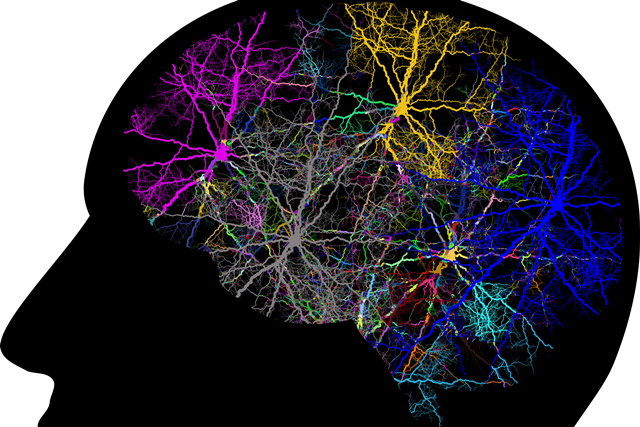17 Sept. 2020. Evidence collected from electronic neuro-stimulation devices shows for most people the wearable systems relieve migraine pain without other drugs. The findings from the study assessing the Nerivio device, made by Theranica Bio-Electronics Ltd. in Netanya, Israel, appear in yesterday’s issue of the journal Pain Medicine (paid subscription required).
Migraine is a neurological syndrome causing severe headaches along with nausea, vomiting, and extreme sensitivity to light and sound. In some cases, migraines are preceded by warning episodes called aura including flashes of light, blind spots, or tingling in arms and legs. The web site Migraine.com estimates 37 million people in the U.S. suffer from migraines, and cites World Health Organization data indicating migraines affect 18 percent of American women and 7 percent of men.
The Nerivio system consists of a patch worn on the upper arm, with electrodes sending out neuromodulation pulses that electronically stimulate C-fiber nerves and block pain signals from reaching the brain. C-fiber nerves are one of the pain pathways in the nervous system. When a migraine occurs, the individual straps on the Nerivio patch and activates nerve stimulation through an accompanying smartphone app for about 20 minutes. The app’s software also checks for proper placement of the patch, monitors the neuromodulation session, and can link to health care providers that need to be alerted.
As reported by Science & Enterprise in May 2019, FDA authorized Theranica to market the Nerivio system in the U.S. for people age 18 and over experiencing acute migraine headaches, either with or without aura. The device is not authorized to treat chronic migraines. While the system requires a prescription, it can be used at home without supervision at the onset of a migraine.
This study is a post-marketing evaluation, with data collected from 1,384 individuals prescribed a Nerivio device between 1 Oct. 2019 and 31 March 2020. Post-marketing assessments seek to confirm findings from earlier clinical trials that test devices under carefully controlled conditions. In this case, the research team led by Dartmouth University neurology professor Stewart Tepper used real-world evidence generated by the devices themselves.
Nearly all participants (97%) used their Nerivio systems under the direction of a headache specialist, while the remainder used the devices in a telemedicine program. Participants recorded their symptoms when first encountered, then two hours, and 24 hours later.
Nearly six in 10 participants (59%) using Nerivio with headache specialists experienced pain relief from their migraine attacks within two hours, as did three-quarters (74%) of the telemedicine participants in at least half of the treated attacks. In addition, one in five (20%) participants using the device with headache specialists, and more than one-third of the telemedicine participants (36%) experienced complete pain freedom within two hours in at least half of the treated attacks. Adverse effects from the devices were experienced by less than 1 percent of participants.
“These are very positive results for migraine patients, and this is important news especially for individuals who are looking for drug-free treatment alternatives,” says Tepper in a Theranica statement released through Cision. Tepper notes that the device provides an added value of digital therapeutics. “Through the Nerivio mobile app, we were able to collect real time data from patients without burdening them, while enabling them to easily share their migraine data with their doctors, when they wanted to do so.”
More from Science & Enterprise:
- Brain Signal Synchronization Device in Development
- UCLA, Apple Partner on Depression Study
- High-Capacity Brain Signal Reader Demonstrated
- Trial Underway Assessing Insomnia Therapy App
- Trial Indicates App Helps Treat Behavior Disorder
* * *


 RSS - Posts
RSS - Posts
[…] Wearable Device Shown to Relieve Migraine Pain […]
[…] Wearable Device Shown to Relieve Migraine Pain […]